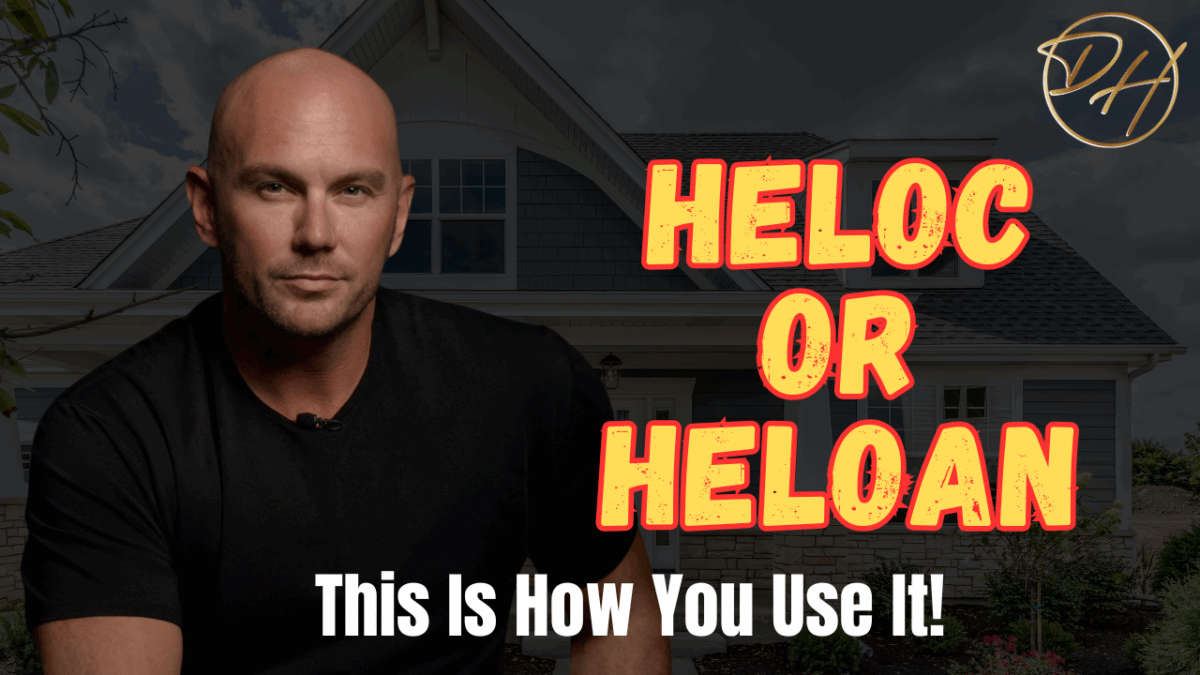
HELOC vs Home Equity Loan: Which Is Best for Homeowners?
How to Use Your Home Equity Wisely: A Homeowner’s Guide to Strategic Borrowing
Every month, millions of homeowners are sitting on six figures in untapped home equity—and they don’t even realize it.
This isn’t just “paper wealth.” It’s real, usable capital that, when deployed strategically, can dramatically reshape your financial future.
Whether you’re looking to pay off high-interest debt, invest in a business, renovate your home, or even purchase a rental property, your home equity may hold the key.
In this guide, we’ll break down exactly how home equity works, the difference between a HELOC and a home equity loan, and six powerful (but responsible) ways to use this resource to your advantage.
What Is Home Equity?
Let’s start with the basics.
Home equity is the current market value of your home minus what you still owe on your mortgage.
For example, if your home is worth $500,000 and your remaining loan balance is $275,000, you have $225,000 in equity.
And you’re not alone—Americans collectively hold over $35 trillion in home equity. Nearly half of mortgage holders are considered “equity rich,” meaning they owe less than 50% of their home’s value.
This equity can be accessed through two main tools:
- Home Equity Loans
- Home Equity Lines of Credit (HELOCs)
HELOC vs. Home Equity Loan: What’s the Difference?
Home Equity Loan
- Lump sum loan
- Fixed interest rate
- Fixed repayment schedule (typically 5–20 years)
- Best for large, one-time expenses
HELOC
- Revolving credit line (like a credit card)
- 10-year draw period followed by repayment phase
- Variable interest rates (though some lenders let you lock in fixed rates)
- Great for ongoing or phased expenses
Each has its pros and cons, but both unlock your home’s value for strategic use—often at much lower rates than other forms of borrowing.
Why Home Equity Matters Right Now
Credit card interest rates are currently averaging 20% or higher. In contrast, many home equity products are still in the single digits.
If you’re carrying high-interest debt, this could be a major opportunity to reduce your monthly payments and improve your financial outlook.
Plus, depending on your home’s value and how much you still owe, you may be eligible to borrow up to 85–90% of your home’s value.
Let’s look at six smart ways to put that equity to work.
1. Consolidate High-Interest Debt
This is one of the most popular (and financially sound) uses of home equity.
Let’s say you have $30,000 in credit card debt with minimum payments totaling $800/month. A home equity loan at 8% could reduce your payment to around $364/month.
That’s nearly $500 in monthly cash flow freed up—and thousands in interest saved over time.
⚠️ Important: This only works if you avoid racking up more debt on those paid-off cards.
2. Invest in a Business
Starting or scaling a business? Home equity may offer better terms than traditional business loans—especially for startups.
Rather than paying 12–15% on an unsecured loan, you might access capital at 7–9% with a HELOC or HELOAN.
A HELOC also allows phased borrowing, perfect for rolling out products, investing in marketing, or managing seasonal expenses.
Just make sure you have a strong business plan—and a clear repayment strategy.
3. Renovate and Add Property Value
Renovations that increase your home’s market value are a great use of equity.
A $50,000 kitchen and bathroom upgrade might raise your home’s value by $70,000—growing your net worth in the process.
Plus, if the loan is used to “buy, build, or substantially improve” the home, the interest may be tax-deductible.
4. Pay for Education
College costs are rising fast, and not all student loans are created equal. Home equity can help fill funding gaps—especially when private student loans carry steep interest rates.
HELOCs allow semester-by-semester draws, so you only pay interest on what you actually use.
⚠️ But remember: Federal student loans offer protections that home equity loans don’t, like income-driven repayment or forgiveness programs.
5. Buy an Investment Property
Many real estate investors use the equity in their primary residence to fund the down payment on a second property.
This strategy:
- Preserves your current mortgage rate
- Avoids tapping retirement savings
- Adds a potential income stream via rent
But this isn’t a free ride—you’re taking on more leverage, so make sure the cash flow math works out.
6. Emergency Fund (But Use Caution)
Home equity can serve as a safety net—but only if the line of credit is in place before you need it.
A HELOC can give you access to emergency funds during unexpected medical expenses, job loss, or other hardships.
Just don’t rely on it for everyday expenses. Think of it as a financial fire extinguisher—not your primary safety plan.
Understanding the Risks
Home equity borrowing isn’t without risks. Your house is the collateral—if you default, foreclosure is on the table.
Here are some key guardrails:
- Only borrow what fits comfortably in your monthly budget
- Keep 20% of your home’s value untouched as a buffer
- If using a HELOC, be aware of potential rate increases
- Look for fixed-rate options or conversion features if stability matters to you
4 Questions to Ask Before Borrowing
- What’s the exact purpose of this loan?
- Can I still afford it if my income drops?
- Will this improve my finances 5 years from now?
- How does it fit into my overall financial plan?
Home equity is not “free money.” It’s borrowed money—at a better rate—tied to your most important asset: your home.
Final Thoughts
Your home isn’t just a place to live. It’s a powerful financial asset.
Used wisely, home equity can:
✅ Lower your monthly bills
✅ Fuel business or investment growth
✅ Improve your home’s value
✅ Provide peace of mind in emergencies
But the key word is wisely.
Have a plan. Do the math. Talk to an expert.
If you’re in North Metro Atlanta—or anywhere across the country—and you’re curious how to use your home equity strategically, I’m here to help.
Let’s turn your home into more than just a house. Let’s turn it into a financial tool that works for you.
Written by Darin Hunter | Mortgage Professional |






